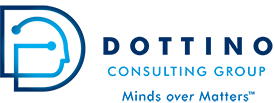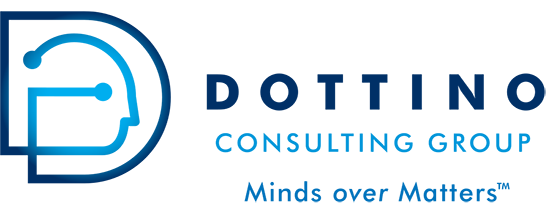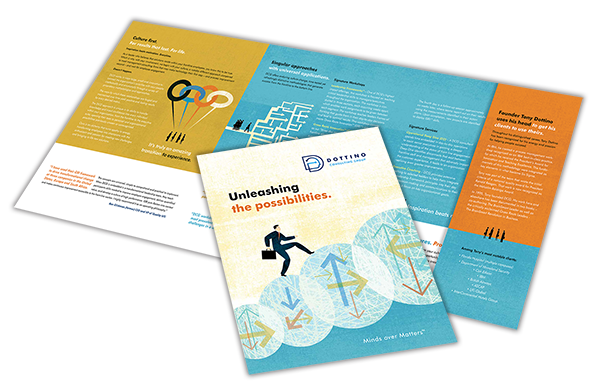Top Ten Challenges of Leaders and Workers – and Transformational Solutions
by Tony Dottino and Marshall Tarley
In this time of hypersonic change, mistakes are magnified and demands require laser focus on the right solutions. Otherwise, CEOs and, indeed, whole companies disappear almost instantly, as if they’ve passed through a tear in the space-time continuum. Yet, there are concepts that are timeless. In the work and hands-on research we have done over that last 23 years, we often have seen leaders spending 70-90 percent of their time in crisis-mode, spending twenty-five percent (or more) of an organization’s budget on fixing mistakes and managing crises. That leaves little time, money and energy to plan, invest and execute in the future.
At the same time, frontline people (your workers) are smarter than ever and want more from their organizations. They want to know, really know, your organization’s goals and how you plan to get there. And, they want input and impact. They no longer just want to be a cog in the wheel, they want to be a part of the propulsion system.
How do you weave these threads of opportunity and challenge into a winning organization and build a future of sustainability? Here are the top ten challenges to executives and frontline workers, as identified by them, and here are the solutions.
Top Ten Executive Challenges
1) Constant competitive pressure to do more with less.
2) The workforce needs to be constantly energized and inspired.
3) A constant state of crisis needs to be stopped.
4) We need innovation and more innovation, followed with execution.
5) We must effectively share the information needed to make good decisions and plan for the future.
6) Managers need to hold people accountable for their commitments and results.
7) We must create a “thinking organization.”
8) We must cut costs while improving quality and customer satisfaction.
9) We must grow business and find new markets.
10) We must attract and retain skilled educated talent.
Top Ten Frontline Workers’ Challenges to Leadership
1) Talk straight to us.
2) Listen to what we are saying, really listen!
3) Make yourselves available and stop going to so many meetings.
4) Give us real feedback that leads to improving our performance.
5) Invest in our development so we can be more productive and have greater impact.
6) Stop cutting budgets/expenses/headcount without understanding the impact.
7) Stop changing priorities every month. Create goals and a plan and stick to it.
8) Provide appreciation and recognition for a job well done.
9) Trust us to do the right thing.
10) Respect our intelligence, experience and knowledge.
Solution – Transformation
You may think there is a one to one solution for each of these challenges and opportunities. In fact, the solution is nonlinear. It’s like an electromagnetic propulsion system that sends out a pulse in many different directions, resulting in a thrust that is sustainable through space and time. Your organization transforms into a proactive innovative juggernaut. How do you reach this level of organizational performance?
We begin with the BIG S – the destination and roadmap, followed by a framework for leaders – a blueprint of understanding and behaviors from which to lead. We call this Leadership Frameworks™. , Then, the major thrusters, injecting enthusiasm, buy-in and creativity into frontline workers by providing them with the skills to innovate and implement new ideas with the support and mentorship of leadership. We call this piece Grass Roots Innovation (GRI)™.
The BIG S
Long ago, I saw a film on the Malcom Baldrige Awards. There was a scene where one of the judges was in a remote northern town at night in a blizzard and found a Fedex office open. At this lonely outpost, as he turned over his package for shipping, he had a thought. He asked this lone Fedex worker if he knew the company’s mission. Without hesitation, the worker articulated it.
Most workers, on a clear calm sun-shining day in a comfortable office, could not do the same. They don’t know where their organization is headed. If there is a vision and mission, it is either little known or hollow in its meaning. We ask a great deal of our workers, but give them little or no idea of what the big picture is. It’s like putting astronauts in a sophisticated spacecraft without a map of the stars and planets or a destination.
We call this picture the BIG S. It’s your organization’s picture of success. It is the vision of the organization and its mission, and its goals over the near term. This information must be clearly articulated, illustrated and communicated in a way that everyone involved in your organization can understand. We have used Mind Maps as an illustrative tool to communicate this key information in a way that is easily accessible to the brain, fires on multiple brain channels and stays present in memory.
Deriving and developing the BIG S requires multiple meetings with executives and managers, and seeking input from the frontline. It requires a skilled facilitator to work with your executives and provide creativity tools and an environment of deep-thinking where all ideas are entertained and no one is shut down. Out of this, a true mission and vision is derived and consensus is attained. Then, the goals, the guideposts to get there, are set.
Communicating the BIG S by multiple means and consistently throughout the organization is key. At the same time, we must develop a framework for leadership, a framework of understanding, behaviors and actions from which leaders are expected to perform.
Leadership Frameworks
The story is all too familiar. Someone is a good, even an excellent performer in their work area, and so, they are promoted to a manager’s position, and from there, often higher into leadership. Along the way, perhaps they’ve received some management training. But, can you teach leadership? Like any other skill-set or discipline, there are concepts and actions that can be taught and can take hold, if the organization embraces them and reinforces them along with their BIG S. We call this structure of leadership behaviors and actions Leadership Frameworks.
Leadership Frameworks is taught over a period of time, allowing for work assignments that integrate these new behaviors into the everyday work and behavior of the leader. Leaders must report results of their assignments and experiences back to their workshop peers and receive supportive instructional feedback from their peers and from the workshop leader, and go out to execute on new assignments to lock in these new behaviors. These skills and behaviors include:
Brain to Brain Communication – How to effectively communicate with an understanding of how the brain integrates and interprets that communication. How to communicate to the thoughts and feelings of others and assess the success of that communication.
Mind Mapping – How to Mind Map and use mind maps as an effective tool to generate creativity, capture divergent thinking, bring consensus, and communicate complex ideas and make them easily understood.
The Success Brain – Utilizing the natural principles of the brain as a model to create success for oneself and the organization and to guide others on that same path.
Emotional Intelligence – How to engender trust and confidence, and provide timely valued feedback that injects belief in oneself.
The System of Proactive Management – A skill-set for understanding the dynamics of interaction within any organization, the differences between a proactive and reactive management systems, and how to analyze business process to identify root causes of failures and fix them, and realize growth of revenues and other opportunities.
Sustainability – Now, the leadership is ready to guide the frontline as we provide them with the skills and opportunities to unleash their creative potential and their desire to be part of the organization’s propulsion system. This is done at the grass roots level through Grass Roots Innovation (GRI).
Frontline Workers and Grass Roots Innovation
Decades ago and for a century before, the Big Head theory of management reigned. Some people know this as management theory X. That is, the idea that one person, or a few people, at the top have the big head with all the brains and know-how to dictate orders to everyone else. Those people at the frontline of work, this theory holds, are unmotivated cogs in the machine, there to carry out orders and do the work. Of course, that’s been blown up. Today, executives understand that they need the ideas, entrepreneurism and innovation from their frontline workers and they need their buy-in and enthusiasm. But, do these leaders provide the pathway to utilize these natural capabilities of their workers? While many leaders worry about the challenge of motivating their employees, the fact is
that workers are naturally motivated and creative, and want the opportunity to contribute.
Leadership Frameworks is the entrée for leaders to engage with their workers in a new way.
Grass Roots Innovation opens the spigot of your workforce and provides the pathway for their inspired contributions to pour out into structure now organized to harness and capitalize on that power source.
Grass Roots Innovation (GRI)
The Grass Roots Innovation program embraces the needs and desires of the frontline workers at the grass roots level (everyone at the worker and first line manager level) and provides them with the skills and opportunity to create and implement change that goes to the bottom line of the organization, all with the guidance and mentorship of their leaders.
GRI Skill-sets for the Frontline workers
GRI models the Leadership Frameworks concepts for frontline workers. It communicates the BIG S though multiple means. Then, it takes a big leap into arming the frontline with skills and unbridled enthusiasm to contribute.
You already know that people at the grassroots of every organization have great ideas. Provide them with a the skill-set to analyze work opportunities, create solutions, bring consensus around the new innovation, break down a cost/benefit to the organization, create a plan to implement it, and you’ve given them the tools of change. GRI not only provides the frontline with the tools to innovate with authentic business plans and metrics, but it gives them the language to communicate it to business leaders. On the last day of the workshop, teams present their proposed business projects.
Critical here is that in addition to the immediate managers being present, most often division heads, COOs CEOs, CFOs, CIOs CNOs and other Os are present, because these teams have important perceptions to open for the leadership and impactful projects to recommend. The logic of these projects is usually so compelling that they are most often approved on the spot. It is the integral piece that brings the organization from reactive to proactive. Importantly, when frontline workers have the opportunity for their ideas and work to be seen and heard and endorsed by leadership, and have direct impact on the organization and its bottom line, with guidance and appreciation from leadership, it puts them on another plane of excitement and enthusiasm that is far greater than mere “motivation.”
What’s more, these frontline workers work in teams that are often cross-functional. The learning that takes place within teams, across teams, across disciplines, and then the open honest communication that takes place between leaders and the frontline at the presentations, shatter silos and creates a transparency that continues into everyday work.
When leadership listens to their people’s ideas, asks good questions, and gives them their approval to move forward and implement impactful change and connect to the BIG S, the entire dynamic of the organization begins to change. There is one more step, and that is accountability.
Accountability
These teams want to succeed. They want to go out and make it happen. Six weeks later, they come back and present progress and results according to their implementation plans and metrics that were approved. Leadership is there to observe, ask questions and approve the teams’ next projects. This moves forward on a dynamic ongoing basis, ingraining innovation and bottom line impact as a part of the culture of work in the organization.
Transformation
At the start, this kind of transformation seems like a moonshot. But, it’s not a moonshot, because the blueprint is there. Leadership creates the BIG S. Leadership Frameworks becomes the structure, a set of principles, guiding the organization. Communication opens in a new and transparent way. Trust takes hold. Grass Roots Innovation (GRI) unleashes the innovative power of the workforce. It’s hard work.
It takes commitment. The rewards are great. Travelling the course and completing this transformation provides a quality of work life for every worker and executive, and pays dividends at the bottom line for many years to come.


